North America Viewing Stones: Canada
Canadian Fairy Stones
By Jeffrey Shortt
Canada is the second largest country in the world, with a vast range of geological phenomena. One of the more interesting forms is known as a botryoidal concretion. The word (BOT-tree-OY-dal) comes from the Greek, meaning “resembling a bunch of grapes”. It is formed from calcified sand deposits, which harden into smooth surfaced orbs. They are found in various parts of the world and are known by many names. The Finnish people refer to them as “Imatra Stones”. In the Northeastern United States, they are known as “Clay Dogs” or “Mud Babies”. In Ireland, Scotland and Québec, they are called “Fairy Stones”.
Northern Québec offers unique forms of concretion located in the Abitibi region, just south of James Bay. They tend to form in spherical clusters and are of a luminous hue, pale to dark grey. The outer surfaces are typically very smooth. Occasionally they may be striated with organic remains or travel lines from ancient worms, then fossilized. Indigenous peoples traveling up the rivers on hunting or trading trips would find them on shorelines. One river, the Harricana, was so named by the Algonquin people as it translates to “River of Biscuits”, in reference to the white stones on the beach. They were considered to have spiritual value and were collected and carried as good luck charms.
Other forms of concretions are found elsewhere in Canada. Nephrite Jade, originally identified in California, comes in a botryoidal form and can be found in the Yukon Territories, although it is increasingly rare from depletion. Other concretion samples have been collected from Lake Superior in Northern Ontario, from British Columbia, and Labrador on the East Coast.
Below are examples from the collections of Les Allen and Tom Elias. Each piece has unique features that bear scrutiny. They are best defined as abstract-shaped viewing stones due to their form. Even though they may not fit the current definition of Japanese suiseki, they nonetheless command the same interpretive and contemplative attention.
Example 1. This concretion could almost be mistaken for an opal. It seems to pulsate with light from within. Its simplicity of form conveys a restfulness and could be given several titles. Measurements: 11.3cm W, 7.8 cm H, 1.5 cm deep (thick)
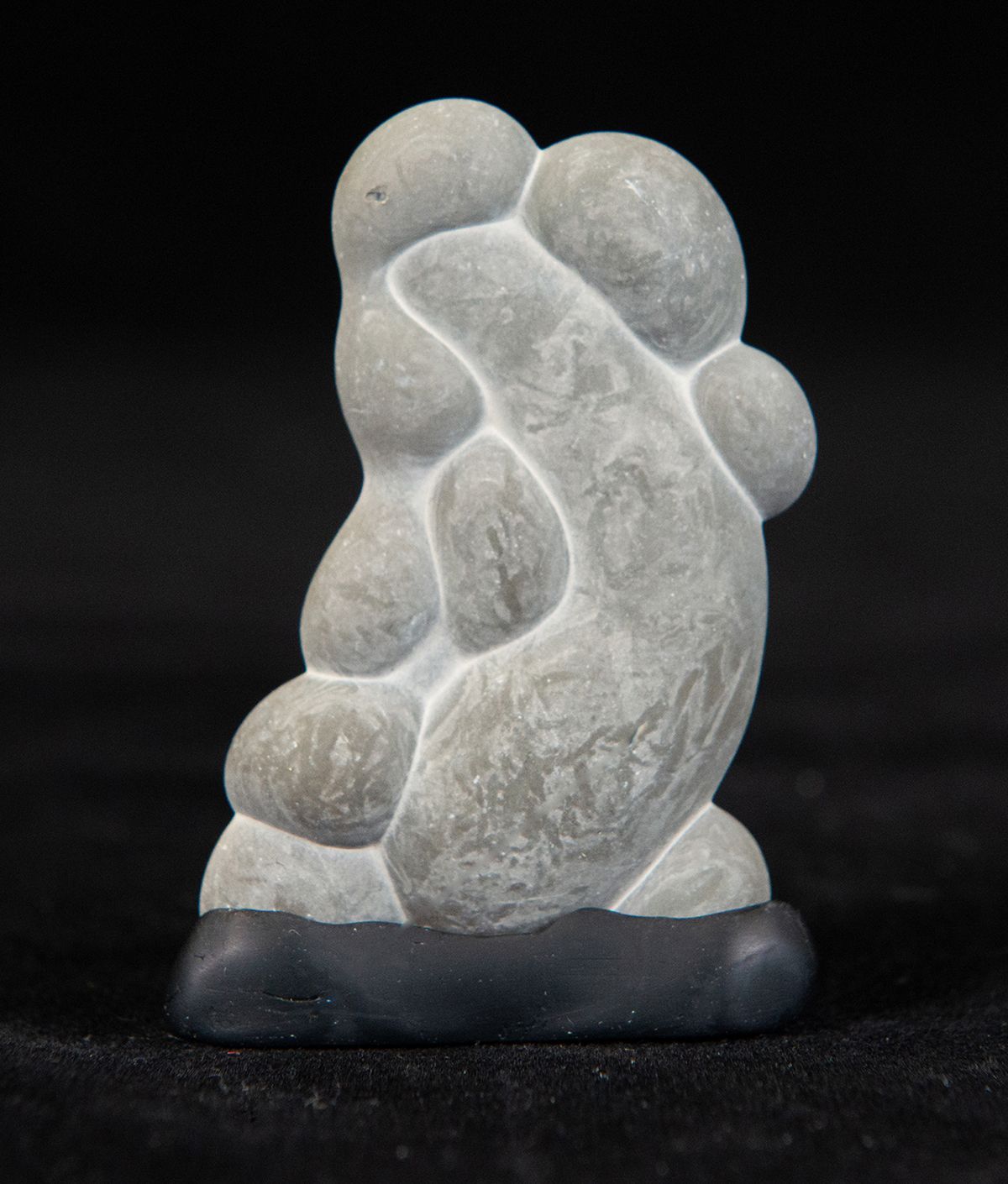
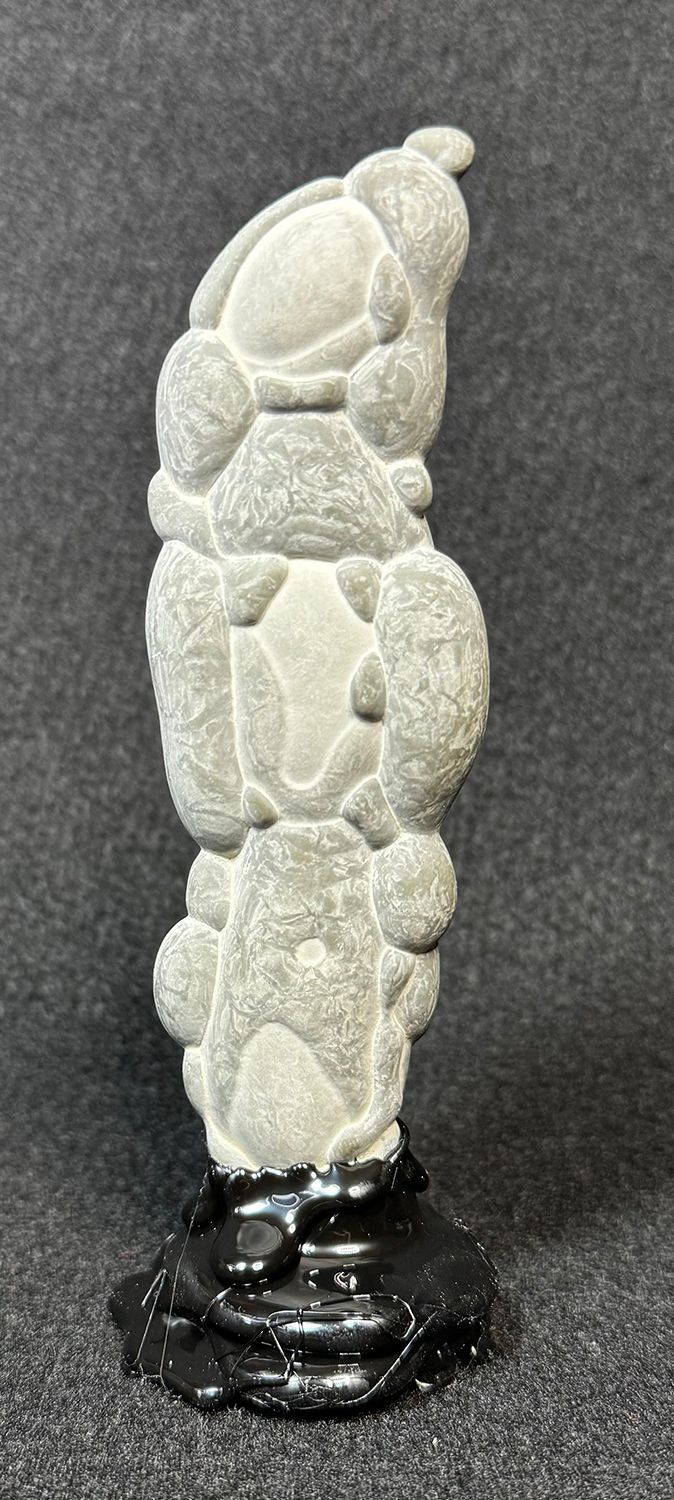
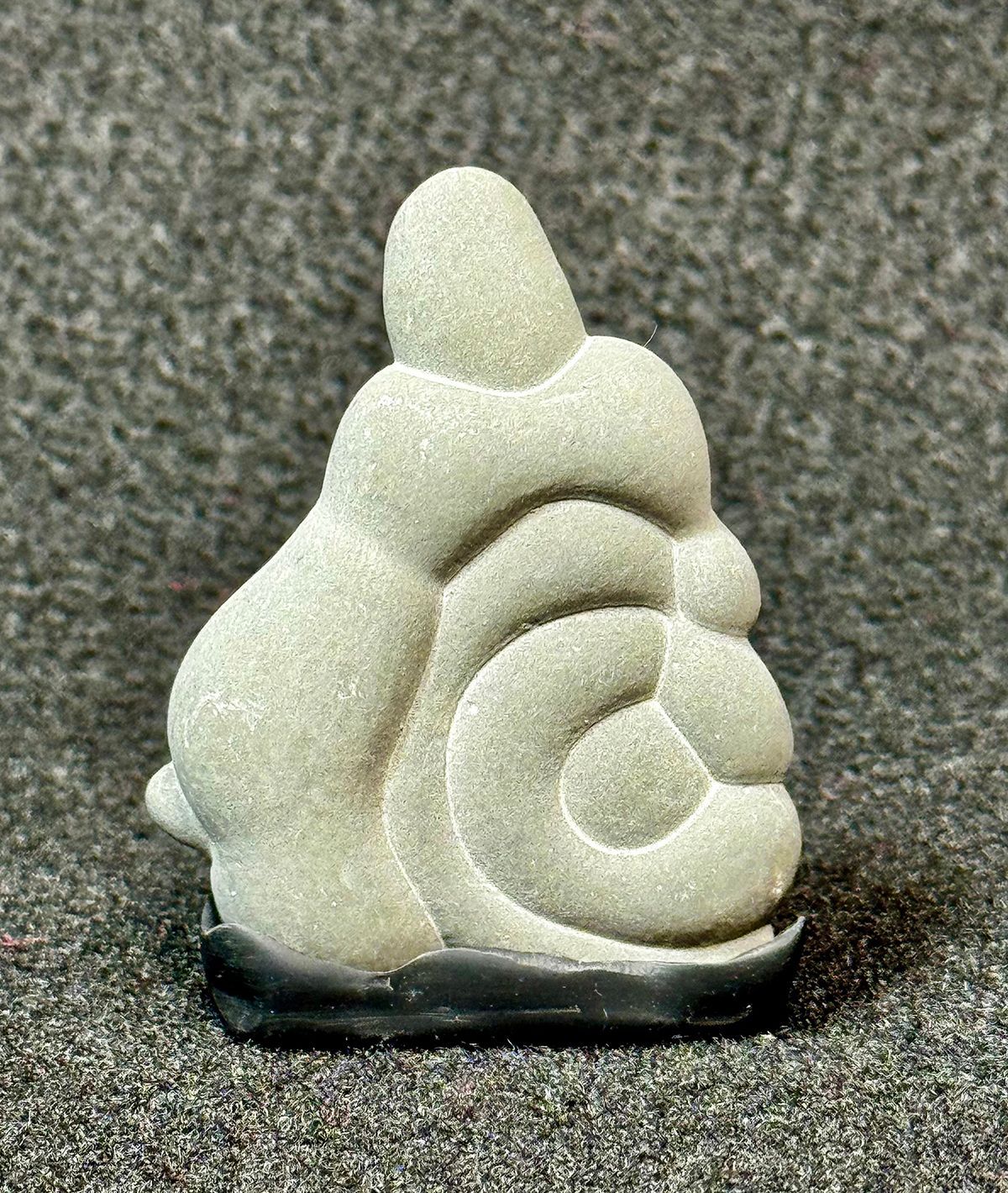

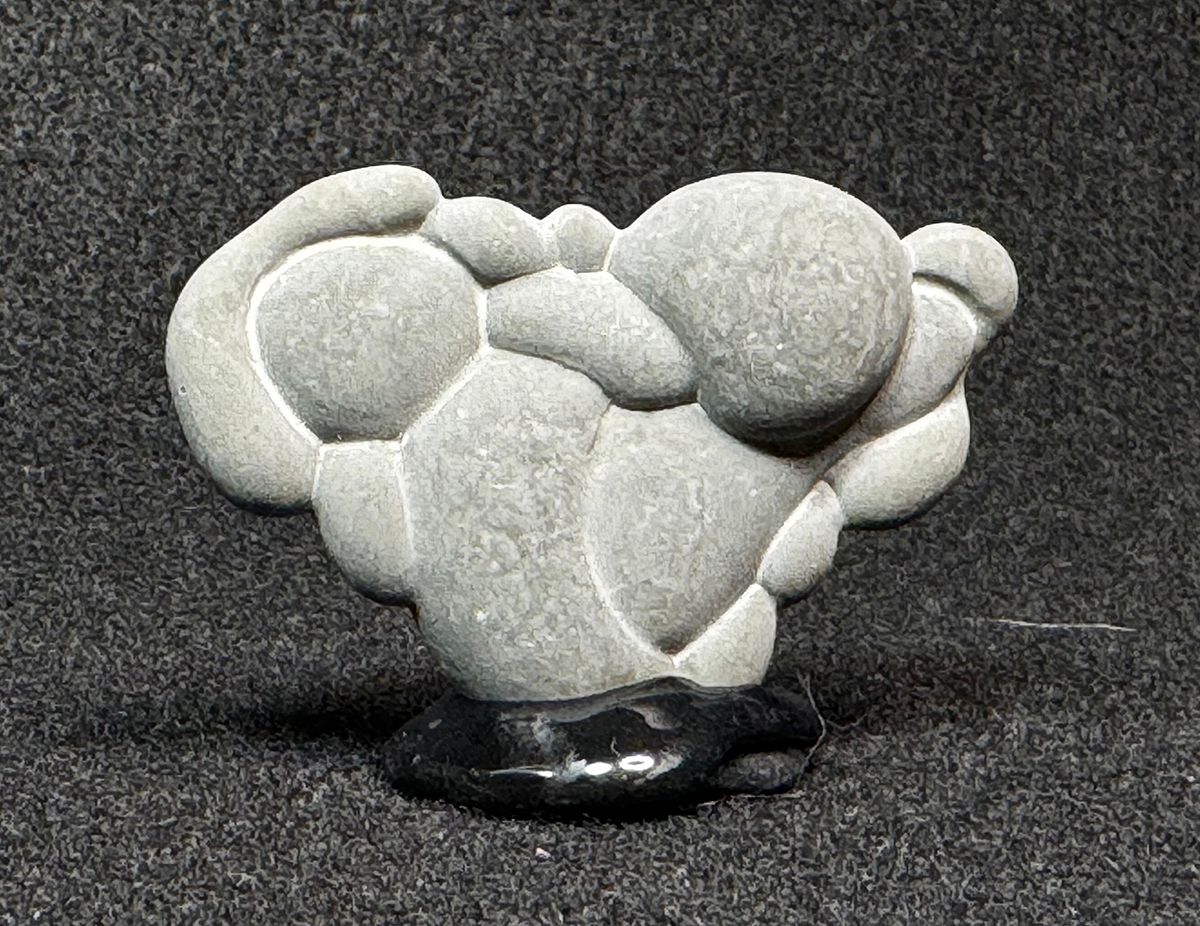
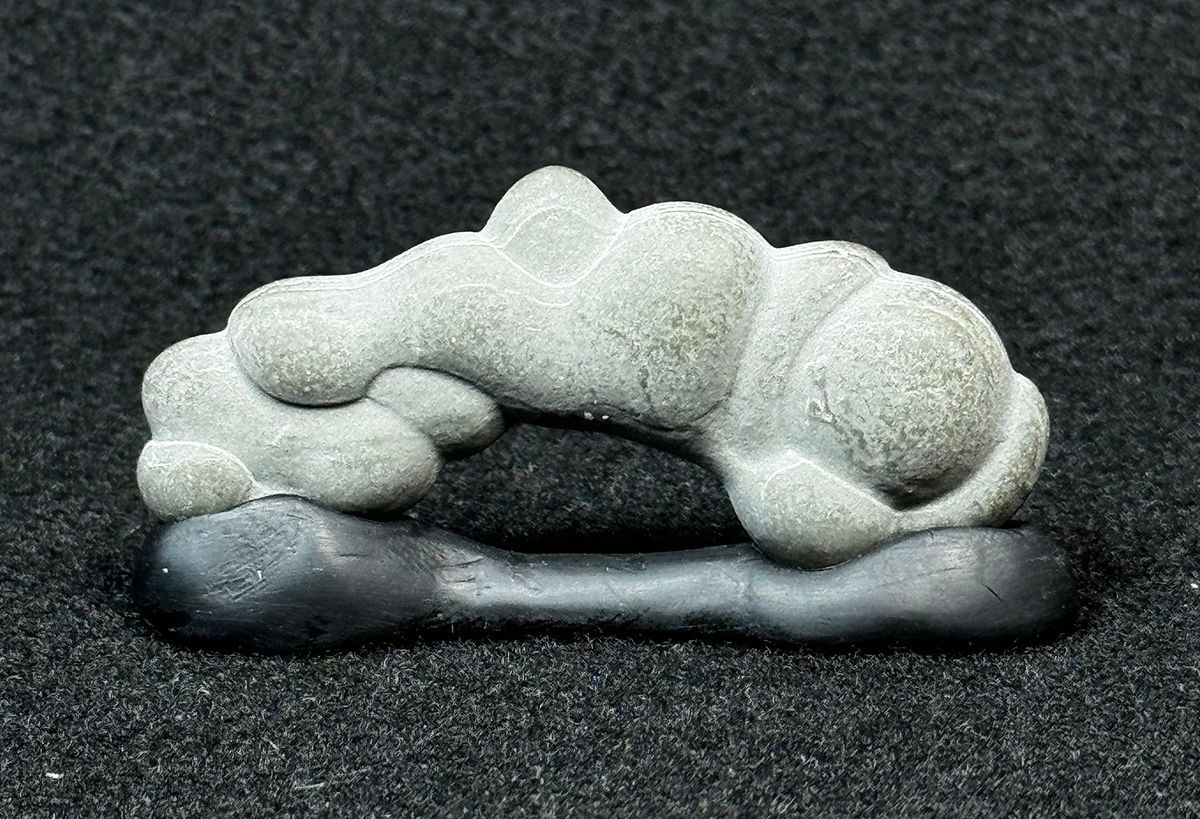
Note the displays of each of these samples. The daizas are unconventional, but complement the stones perfectly.

